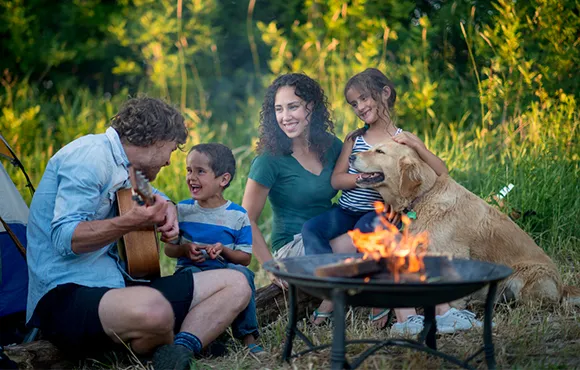From repetitive hexagons woven into beehives, to the support systems of skyscrapers, shapes are found everywhere. They consist of lines, patterns and repeated forms or they can take on their own unique structure. Intertwined networks of various configurations await the discerning photographer to extract, isolate and capture what could be the outlined silhouette of a wild animal or the iconic form of the Statue of Liberty at sunset. Lens choice, light, color, contrast and shooting angle all contribute to the success of capturing subjects with distinct shapes.
Shape plays a dominate role in identifying objects in everyday life. The silhouette of a dormant tree in winter or the outline of an airborne flock of geese at sunset need no explanation as to what they are. Everyone is familiar with these forms, yet in the eyes of some, they’re deemed mundane. As a photograph, they’re often overlooked. But if you learn how to integrate shape, form, texture, lines, and patterns into an image, boring would be the last word you’d use to describe the photograph.

Any Way, Shape Or Form
When it comes to trees, there’s no mistaking the very recognizable form of a quintessential acacia of the Serengeti. Paired with a radiant Tanzanian sunrise, it becomes one of the most prototypical images that can be made on the African continent. To take it to the next level, I pose the following: as soon as someone mentions the words “crescent moon,” an immediate image of it is formed in the mind. Incorporate both the silhouette of an acacia with the shape of a crescent moon and two very distinguishable forms stand out in the image. Look for ways to include multiple discernible shapes into the same image.
Shape Up Or Ship Out
Silhouettes are commonly used to show shape. But as someone who leads a number of safaris to the Serengeti each year, I always have my participants take their photography to the next level. If the theme for the day is shapes, what first pops into the participants’ minds is a silhouette. But I take it to the next level and ask each person what else can be photographed that exemplifies the word. This gets everyone thinking and before you know it, I’m shown very recognizable shapes in their compositions. The point is to get photographers to not rely on the obvious—think about bringing your image making to the next level. An elephant’s ears, tusks and trunk are archetypal shapes. Strive to show these shapes in classical form. Show persistence and fortitude to capture all aspects in a single frame. You’ll know it when you see it.

Bent Out Of Shape
Shape can be found in patterns and textures. The way lines flow and ebb when you move into the world of close-up photography can be easily exploited. For instance, a tree in its entirety may be dull and ordinary. The background may be busy, bright distractions may surround it or the light could be flat and ugly. But, when one moves in close to find shape, patterns or textures, a plethora of possibilities open up. Get “bent out of shape” and look for swirls that bend around each other, look for lines that lead the eye to something iconic and look for repeated patterns that form shapes. Begin by narrowing your world into a 4-by-6-foot area of the tree. Once you exhaust the possibilities, narrow your view even further and work in a 2-by-3-foot section. Continue in this manner until you’re working in areas comprised of inches. You’ll be surprised how fast hours go by and you don’t even realize it.

The Shape Of Things To Come
Shapes are the building blocks of all structures. This being said, work with shapes to frame other shapes. Only an hour away from my home is a local park, Garden of the Gods. Based on its beauty, one could argue that it should be deemed a national park. I took it upon myself to photograph it in all seasons. This forced me to walk the myriad trails to find images that are seasonally dependent. In doing so, I explored a formation called the Siamese Twins. At the bottom of the ‘twins” is an eroded opening. Walking up to it, I saw Pike’s Peak through the hole. The bonus was the near full moon was tracking close to the summit. I waited until the shape of the moon, connected with the shape of Pike’s Peak, framed by the shape of nature’s own carving of the opening.
To learn more about this subject, join me on one of my photo safaris to Tanzania. Please visit www.russburdenphotography.com to get more information.















